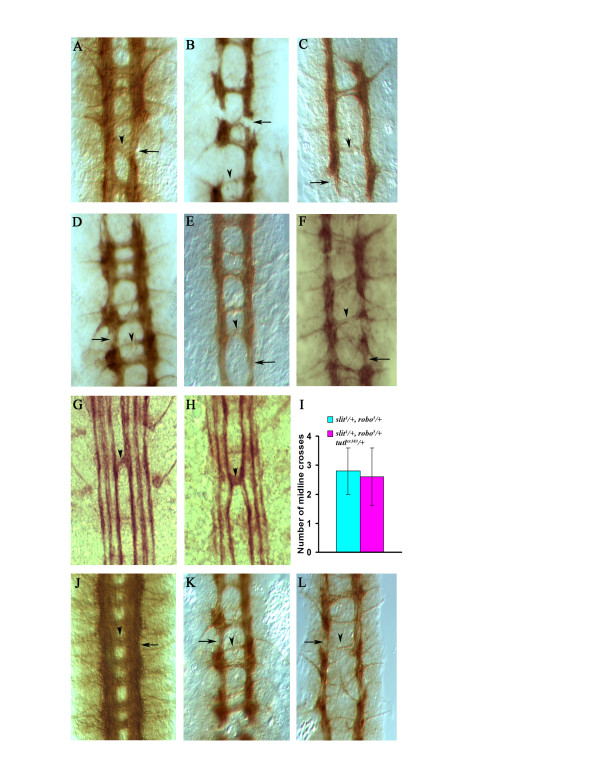Figure 3.
The turtle gene products act as netrin-independent midline attractants. (A) Df(1)NP-5 homozygous embryos are missing the netA and netB genes and, consequently, exhibit gaps in their longitudinal connectives (arrow) and fragmented commissures (arrowhead), as revealed by BP102 staining. (B, C) Df(1)NP-5; tutlex383/+ embryos show an enhancement of both defects (B, arrow and arrowhead), while Df(1)NP-5; tutlex383 double mutants have an extreme reduction in commissures, with only one thin fragmented commissure formed throughout the length of the embryo (C). (D) fraGA957 homozygous embryos exhibit gaps in their longitudinal connectives (arrow) and fragmented commissures (arrowhead) as revealed by BP102 staining. (E)fraGA957, tutlex383/+ embryos show an enhancement of both defects. while fraGA957,tutlex383 double mutants have an extreme reduction in commissures (arrowhead) (G) slit1/+, robo5/+ embryos have a reduction in slit signaling that can produce a minor midline crossing defect revealed by FasII staining (arrowhead). (H, I) slit1/+, robo5/+, tutlex383/+ triple heterozygotes do not show any enhancement nor suppression of the FasII axon crossing defect compared to slit1/+, robo5/+ double heterozygotes alone. (J) abl1 homozygous embryos do not show any defect in commissure or longitudinal connectives as revealed by BP102 staining (arrow and arrowhead). (K, L) tutlex383; abl1/+ embryos show an enhancement of commissural defects (K), while tutlex383; abl1 double mutants have an extreme reduction in commissure formation (L, arrow) and fragmented longitudinal connectives (L, arrowhead).

